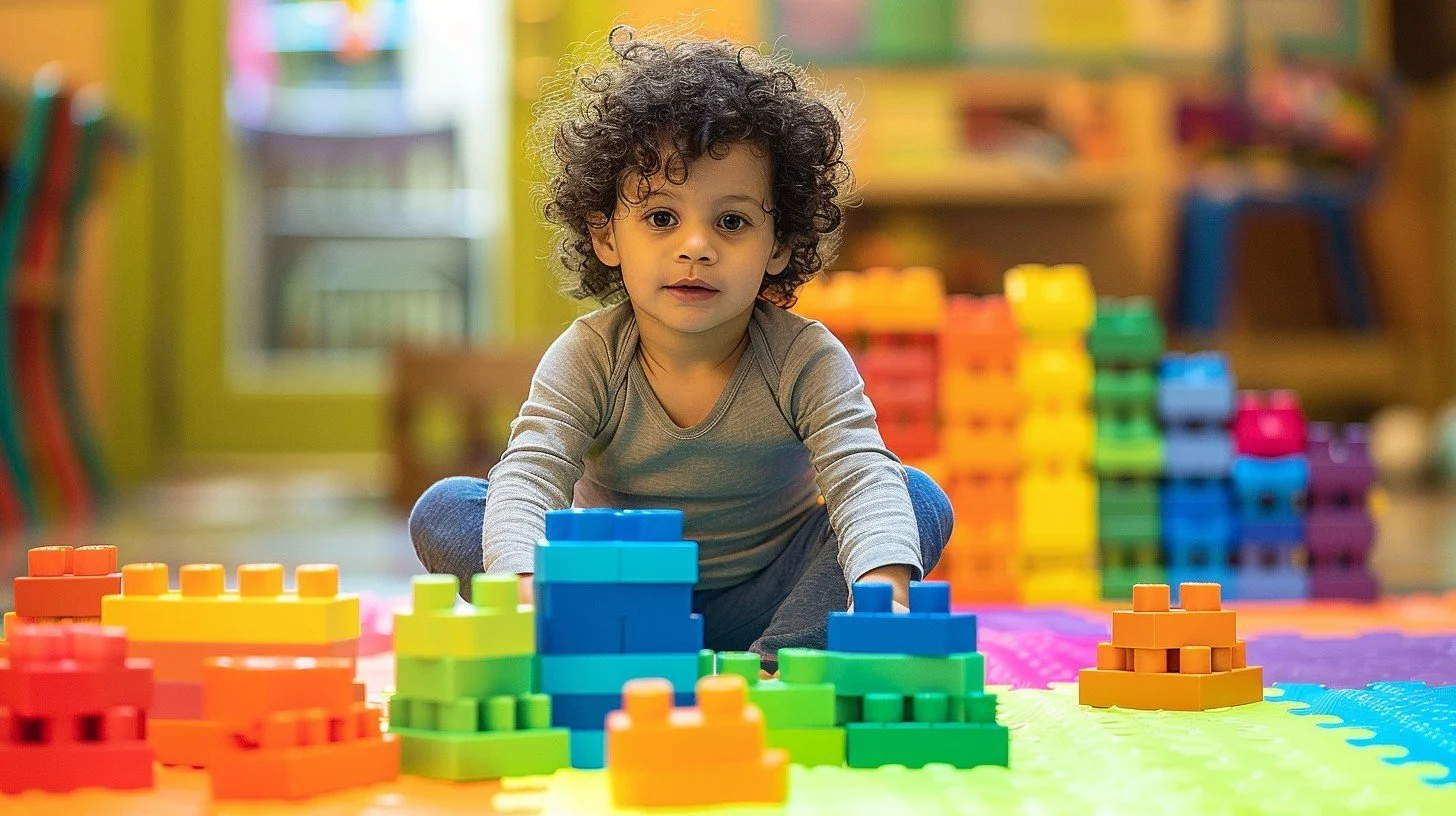The Critical Role of Pretend Play in Early Language Development
If you’ve ever watched a child use a spoon as a rocket, or heard them insist their teddy bear has a fever and needs a doctor, then you’ve seen pretend play in action. It may look like simple fun, but what’s happening inside their little brains is much more powerful than it seems.
It’s easy for any of us to overlook pretend play as just another imagination. However, research indicates that pretend play is a vital part of childhood development - particularly in terms of language, social skills, and cognitive abilities.
Make it stand out
What is Pretend Play?
Pretend play (also called make-believe or imaginative play) is when a child uses objects, actions, or ideas to represent other things. For example:
A stick becomes a phone
A child pretends to be a doctor treating a teddy bear
This type of play typically involves daily use of objects, role-playing and storytelling - all of which are also core components of language. Just as words symbolise ideas and objects, pretend play allows children to assign new meanings to familiar things.
Onset of Pretend Play
Pretend play begins around age 2, but it becomes essential between ages 3 and 6, when children are developing the core building blocks of language and thought.
One study found that with support, autistic children improved their pretend play and language through a simple, structured play-based intervention. Children with delayed language, social challenges, or developmental differences (such as autism) can particularly benefit from targeted pretend play experiences.
Why is Pretend Play So Important?
Pretend play may look like fun and games, but it lays the groundwork for many essential life skills. Here’s what the research tells us:
It builds symbolic thinking.
Pretending that one thing stands for another is a big mental leap. It’s the same kind of symbolic thinking we use when we understand that words represent ideas.It supports emotional understanding.
When children act out different roles - like a parent, baby, superhero, or pet, they’re learning how to see things from different perspectives. This helps them develop empathy and emotional regulation.It develops social skills.
Pretend play often involves taking turns, negotiating roles, and working together. They help build skills that are crucial in classrooms and friendships.It strengthens thinking and memory.
Creating stories, remembering rules, and holding onto pretend scenarios all exercise a child’s working memory and cognitive flexibility.
Pretend Play and Language Development
Pretend play doesn’t just help with imagination — it directly supports language development. In fact, research shows that children who engage in rich pretend play tend to develop stronger vocabulary, better storytelling skills, and more advanced grammar.
One large study of over 7,000 children found that those who played imaginatively had faster gains in both receptive (understanding) and expressive (speaking) language skills — especially among children on the autism spectrum.
So how does pretend play help language?
Children use more descriptive language as they explain what’s happening.
They learn to sequence events (“First, I’ll bake the cake, then we’ll have the party”).
They practice narrative structure: characters, settings, problems, and solutions.
They expand their vocabulary - including words for emotions, actions, and made-up ideas. Even the back-and-forth talk that happens during pretend play lays the foundation for strong conversational skills.
How Parents Can Support Pretend Play at Home
You don’t need fancy toys or expensive kits to encourage pretend play. The best tools are your time, attention, and a bit of imagination. Here are a few practical ways to support pretend play at home:
Provide open-ended materials.
Cardboard boxes, spoons, scarves, stuffed animals, or old clothes can become anything with a little imagination.Follow your child’s lead.
Let them decide the story. You can join in by asking questions or adding gentle prompts like, “What happens next?” or “Oh no! What should we do?Expand the story.
Use rich language. For example: “Oh, the baby is crying. Maybe she’s tired or hungry. What do you think we should do?”Introduce new roles or ideas.
Bring in new characters, pretend jobs, or simple problems to solve. “What if the restraunt store runs out of burgers?”Make time for uninterrupted play.
Give your child time and space to get into their pretend world. Try turning off screens and letting play unfold naturally.Play together — and laugh!
Don’t be afraid to get silly. Be a pirate, a talking dog, or a mischievous dragon. Your enthusiasm shows your child that play is important — and fun!
Take-Home Message for Parents
Pretend play is far more than entertainment—it’s a powerful tool for cognitive and language development. In a world full of schedules, screens, and structured activities, pretend play is a child’s way of making sense of everything around them. By encouraging pretend play during these formative years, you are supporting:
Faster vocabulary growth
Improved sentence structure
Stronger listening and speaking skills
Better emotional and social understanding
Backed by recent research, pretend play stands out as a low-cost, high-impact way to boost your child’s communication skills, setting them up for long-term success in school and in life.
So, the next time your child turns a blanket into a superhero cape or talks to a pretend puppy - celebrate it. You're witnessing language in action.
References:
Written by Meghana L (Sr. Speech Language Pathologist & Clinical Coordinator)


